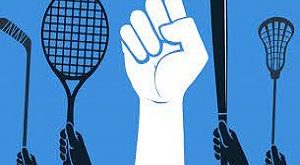wellspring of old Malay show can be followed back to the crude strict customs of antiquated Malays. In Malay areas, shadow puppets began to spread in the 14th cen
tury AD. In the 1880s, Malay drama emerged as a comprehensive art form. The development of Malay drama was sluggish as a result of the obstruction of conservative forces. Malay drama has made significant progress since the 1950s.
There have primarily been four stages of development in Malaysian drama: contemporary drama, realist drama, early stage drama, and Bangsawan drama.
Bangsawan Drama
It was originally a Persia-based Islamic religious dance drama about sacrifices. The narrative centered solely on Islamic heroes and prophets, but over time, it gradually expanded to include historical events and actual people. A Persian Wayang troupe that performed plays arrived in Penang in the year 1870. The performance became well-known.

Mamak Bush founded the Malayan Wayang Theatre in 1883, imitating the Persian Wayang Opera. In light of the nearby friendly reality, he imitated the Persian Wayang style and did execution exercises that basically mirrored the existences of the privileged figures in the public arena. Bangsawan, which translates to “noble drama,” is the name given to the performance because it is inspired by noble tastes. It acquires the custom of society rap, embraces the screen framework, and the entertainers make up their own lines improvisedly and sort out clashes.
The early Bangsawan plays were primarily based on domestic and international myths, fables, and historical tales, and they had a strong primitive religious flavor. For instance, “Alibaba and the Forty Criminals” and “Aladdin and the Enchanted Light” are well known plays. Bangsawan dramas began to reflect real life in the 1930s. The themes were admonishing the world, promoting goodness, and punishing evil. Before the 1940s, it became a popular drama in Malay-speaking regions, including Indonesia.
Famous plays
In 1935, Johor hosted the premiere of the film “Between Two Coffins,” which told the story of pagans being tried for their marriage and death.
“What blame’s identity was'” first acted in 1938, Singapore, depicting an unfilial child being struck to death by lightning and uncovering the underhanded outcomes of oppressing schooling.
“The Defiant Child” was first acted in Johor in 1932, portraying a young fellow who deserted his better half and kept on wedding others, gulping his family riches, lastly finished in jail.
Early Stage Drama
The national liberation movement flourished after the Second World War, and the Bangsawan drama gradually declined. Intellectuals educated in the West translated Shakespeare’s plays, advanced the concept of emphasizing contemporary social life, and translated drama theories.

The Indonesian Theater Company transformed Bangsawan Opera in the 1930s by using a stage book, removing the interspersed performance program, and emphasizing the director’s role. The troupe’s Malayan repertoire had an impact on the local theater community; it was dubbed a “new drama,” and the drama came to the forefront. The Shakespeare play performed by the school during this period likewise had a specific effect.
Representative Work
Dramas used historical themes to reference contemporary social life in the early stages. “Islamic Hero Tale Bin Zayed,” performed by Shade Alwe Alhadi in 1942, promoted the spirit of Islam. “Malay Hero Hang Tuah” hailed the nation’s heroism.
The drama hit its peak in the 1950s. The work repeats the enlivening of the Malay country, and the delegate work are “Water Apparition”, “Johor Tiger”, and “Tun Sri Lalang”. Garam Hamidi’s “Offspring of Superbness” is viewed as an incredible show with creativity.
Realistic Drama
The form of Bangsawan drama was completely abandoned after the 1960s, when stage installations focused on the authenticity of life and drama focused on the colloquialization of lines. Playwrights began to learn about critical realism’s creation techniques and began to focus more on gathering information from contemporary social life.
Representative Works
The iconic 1928 play “Uda and Dara” by Usman Awang is a tragedy that deplores the feudal system and depicts the innocent love of young men and women. The one-act play “Visitor on Kenny Slope” depicts what is happening of a senior authority who is tormented by different inconsistencies, uncovering different inconsistencies, all things considered. His plays include “From Stars to Stars,” “Under the Sun,” “Curtain of the Times,” “Red Morning,” and others. concentratedly mirror the accomplishments of Malay show creation in the profundity and expansiveness of authenticity.
Contemporary Drama
Dramatic experiments had already begun when realist drama began to flourish. Some playwrights in the 1970s abandoned the tradition of directly reflecting social reality, adopted Western absurd drama performance techniques, adopted humanitarianism as their guiding ideology, deeply reflected people’s lonely inner activities, and purposefully created absurd and peculiar stage images. “Contemporary play” is the name given to their plays.

his sort of show by and large doesn’t have a cognizant story. It is based on the actors’ symbolic performance on the stage, or the ambiguous plot is shown through a variety of performances, like singing, dancing, music, shadow puppetry, and a slide show, which can show how humans and gods interact with one another and with one another.
Representative Works John Garafar’s “Dry Wind” expresses people’s desire for happiness and a luxurious life by employing the technique of creating a bizarre fantasy atmosphere. Their work is known as the purported “top-grade show” that must be valued by the learned in the public arena.








